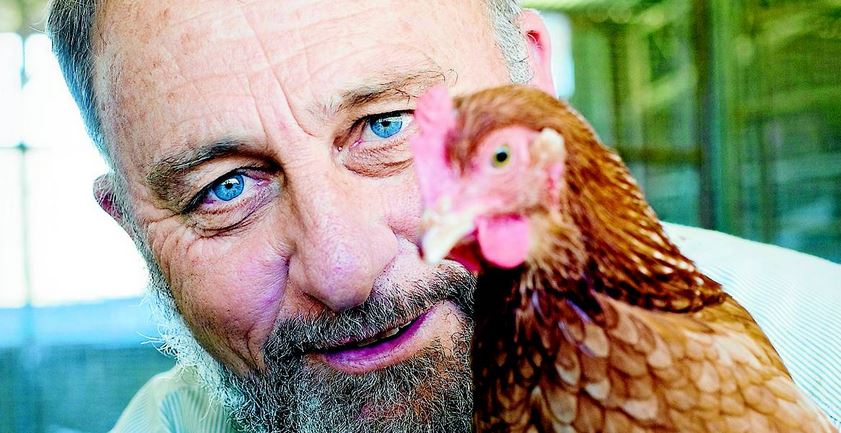Professor Geoff Hinch’s joint project with CSIRO is generating intriguing new data on the use of the range by hens. Geoff’s Poultry CRC supported research, entitled New approaches to assessing welfare in free-range laying hens, aims to quantify outdoor range use by hens, and then relate this to ‘welfare status’ of the birds.
A previous eChook article (click here) explained the challenges faced for welfare scientists in determining a reliable and objective measure of welfare status, regardless of the housing system. At the time Geoff said, “Although provision of outdoor space is perceived to be one of the virtues of free-range systems, it becomes difficult to assess its welfare benefits if it is not used by all birds”.
Employing Radio Frequency Identification (RFID) technology, Geoff’s team at the University of New England have conducted a recent trial wherein they monitored movement between an indoor and outdoor area in free-range laying hens. Each hen has been fitted with RFID microchips fixed to a plastic leg band for individual identification. Individual hen movement between the indoor and outdoor area was logged using RFID antennas fitted to ‘pop-holes’. Data was collected daily from 9:30am to 4pm during 51 continuous days to identify variation in outdoor use.
“The experimental scale free-range facility comprises an 8 x 12 m shed housing 200 Isa Brown laying hens and a fox-proof fenced free-range area of 2,500 square meters” said Geoff. “Due to the large amount of information gathered with the RFIDs, custom software was developed to extract meaningful data from the datasets”.
Analysis of the RFID data from this trial showed that 89.4% of the hens used the outdoor range on at least one day across the 51 day period (Figure 1), with about 15% of hens going outside every day. Interestingly, 10.6% of the hen population never went outside into the range. “The hens that used the range had an average of 8 visits per day and spent a total of two and a half hours per day outside on the free-range” said Geoff. “However, we really need to confirm the pattern in the next, larger trial before getting too carried away with our initial results”.

The next phase of this project is to statistically analyse results from subsequent behavioural and physiological tests, and examine if there is any correlation between range use and welfare status. “20 hens that used the outdoor range every day and 20 hens that never used the range were identified for behavioural and physiological tests” said Geoff. “Preliminary analysis suggests that it is feasible to use our methodology to assess individual laying hen motivation to access the free-range while being kept in large groups”.
The physiological and behavioural characteristics of the above two subgroups were assessed using the following traits tests:
- Judgment bias test: to assess affective states as an indicator of welfare status (methodology outlined in previous article),
- Manual restrain test: to assess behavioural and physiological response (plasma corticosterone) to an acute stress challenge,
- Open field test: to assess behavioural responses to novel surroundings and social isolation,
- Tonic immobility test: to assess fear responses, and
- Threat perception using infrared thermography to assess behavioural and physiological (change in eye and comb temperature – sympathetic mediated response) responses to an alarm call (Figure 2).
This ongoing project is on the cutting edge of welfare research. Geoff and his team are well on the way to producing reliable and objective, science-based models of welfare for delivery to our poultry industry.



